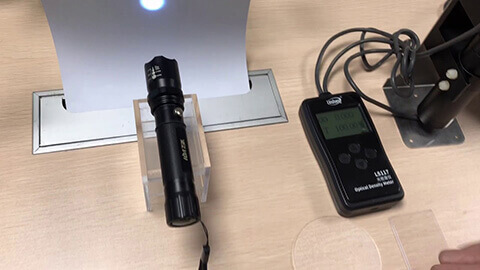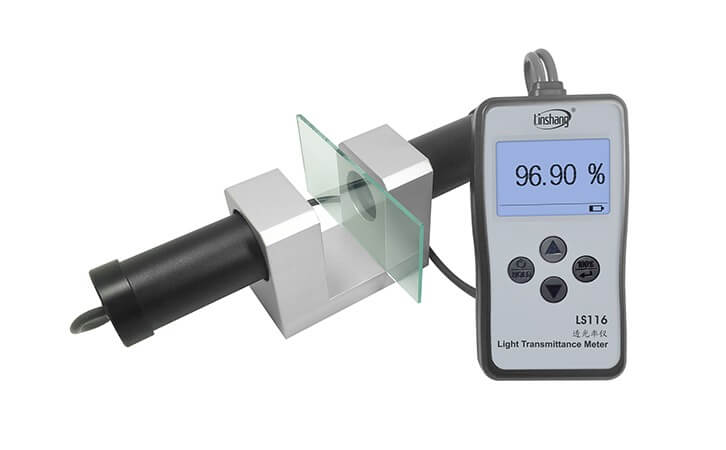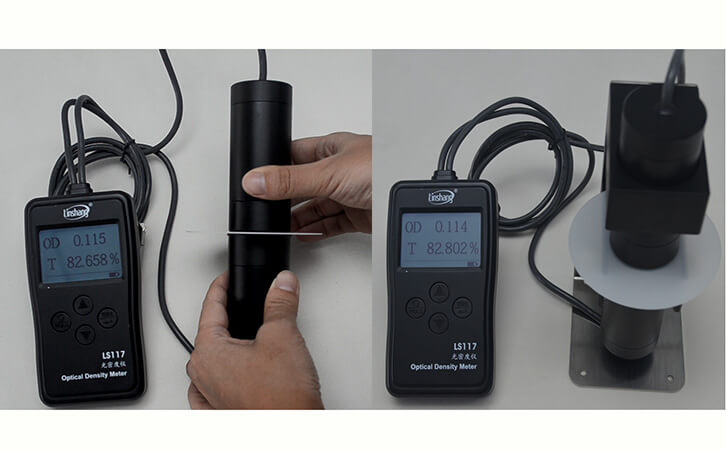Regular Reflection and Diffuse Reflection
Light transmittance is what we often call visible light transmittance, which represents the ability of light to pass through the medium. The percentage of the luminous flux through transparent or translucent material to the incident luminous flux. Transmittance is an important parameter of many materials. For example, these materials have requirements for visible light transmittance. When light penetrates materials with different physical properties, regular or diffuse reflection occurs. For transparent materials and translucent materials such as opalescent and frosted materials, we need to measure the visible light transmittance of these materials with light transmittance meters of different principles.
I. What is regular reflection and diffuse reflection?
Transparent materials and frosted materials have different properties, the reactions that occur when light passes through these materials are also different. When light passes through the transparent material, the light will transmit regularly-regular reflection. When the light passes through the opalescent or frosted material, the light will transmit diffusely-diffuse reflection. Therefore, the measurement of transparent materials and frosted materials requires a professional light transmittance meter. So many friends may still not understand this. What is regular reflection and what is diffuse reflection? Below, we briefly introduce the principles of regular reflection and diffuse reflection.
1. Regular reflection
Specular reflection, or regular reflection, is the mirror-like reflection of waves, such as light, from a surface. The law of reflection states that a reflected ray of light emerges from the reflecting surface at the same angle to the surface normal as the incident ray, but on the opposing side of the surface normal in the plane formed by the incident and reflected rays. (Quoted from Wikipedia) Simply put, through this material, you can directly see the image behind the material.
2. Diffuse reflection
Diffuse reflection is the reflection of light or other waves or particles from a surface such that a ray incident on the surface is scattered at many angles rather than at just one angle as in the case of specular reflection. (Quoted from Wikipedia) When light passes through the diffuse transmission material, the image we see from behind the material is blurred.

II. Video demonstrate regular and diffuse reflection
We made a simple experiment to simulate the difference between regular and diffuse reflection. Friends who still don't understand regular transmission and diffuse reflection can watch this interesting video.
Experimental process: In the video, we put a flashlight with a built-in parallel light source on a stand and shine it on a piece of white paper and an aperture will appear on the white paper. Keep the position of the light source unchanged, illuminate the transparent material and the frosted material with the light source respectively and observe the change of the aperture on the white paper.
Experimental results: when light passes through transparent materials, regular reflection occurs. The aperture does not change. When light passes through the frosted material, diffuse reflection occurs and the aperture becomes larger.
III. How to measure light transmittance of transparent and translucent materials?
For transparent and translucent materials, we need to use transmittance meter of different principles for light transmittance measurement.
1. How to measure the light transmittance of transparent materials?
The instrument adopts a parallel light path design and can also be used to measure large thickness materials with an accuracy of ±1%; the light source of the instrument meets the CIE photopic luminosity function, ensuring that it passes the inspection of China Institute of Metrology. LS116 light transmittance meter can also measure high-permeability materials, light transmittance can be measured up to 99.8%.
2. How to measure the transmittance of translucent materials such as opalescent and frosted materials?
You can use a transmittance meter based on the diffuse transmission principle, such as the LS117 optical density meter (transmittance meter). This transmittance meter can simultaneously measure the optical density and visible light transmittance. The instrument use diffuse transmission principle and is suitable for the optical density measurement of aluminized film, films, X-ray film, lens ink and other materials, as well as the visible light transmittance measurement of opalescent materials and matte materials, such as zirconia, opalescent Acrylic etc. LS117 transmission meter complies with the CIE photopic luminosity function and can pass the inspection of China Institute of Metrology.
- How to test the light transmittance of polarizer?
- Three Treatment Methods for Metal Anticorrosion
- What is Anticorrosive Paint and its thickness measurement?
- UV Power Puck and UV Curing Technology
- How to Choose Plastic Film with Paint Thickness Meter?
- Optical Density Meter Measure Aluminizer Thickness


